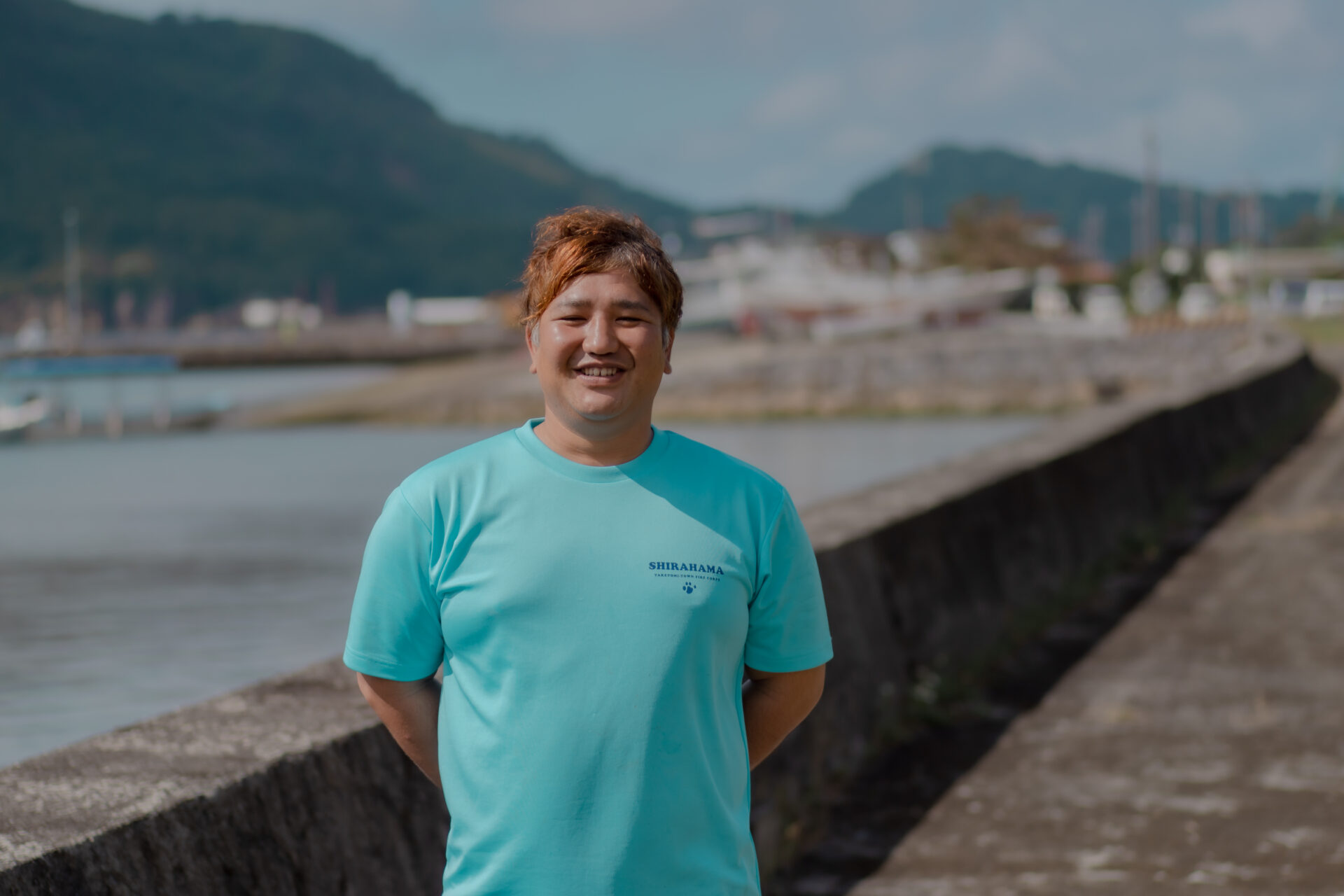
Weaving Connections Between People to Create a Hometown Where Children Can Dream of the Future

下地 周平
Shuhei Shimoji
Taketomi [Okinawa]
Shuhei Shimoji
Born on Iriomote Island in the Yaeyama Islands of Okinawa Prefecture. Left the island upon graduating from middle school to attend high school on Ishigaki Island. After living on the main island of Japan, Honshu for two years, he returned to his hometown. Currently, he is engaged in tourism and fishing in the Shirahama settlement where he was raised, while also actively participating in various community activities as a "young leader." Since 2021, as a member of "Shirahama Koina," he has been offering tours that utilize the rich natural environment of Iriomote Island and the traditional culture of the settlement.
Shimoji Shuhei grew up in the small Shirahama settlement on Iriomote Island, located in the southwestern part of the Yaeyama Islands. After graduating from middle school, he left the island to attend high school and briefly worked on the main island of Honshu, driven by a fascination with urban life. However, his attachment to the island and the sea prompted a return. He felt warmly welcomed back, viewing the entire settlement as family. Since then, he has been making a living through tourism and fishing and, since 2021, has been a part of "Shirahama Koina," dedicating efforts to enjoying the local natural environment and preserving the traditional "Sea God Festival." We asked about his vision for the future of the Shirahama settlement, along with his feelings toward his hometown.
The small Shirahama village on Iriomote Island.
Children’s aspirations are toward the mainland cities.
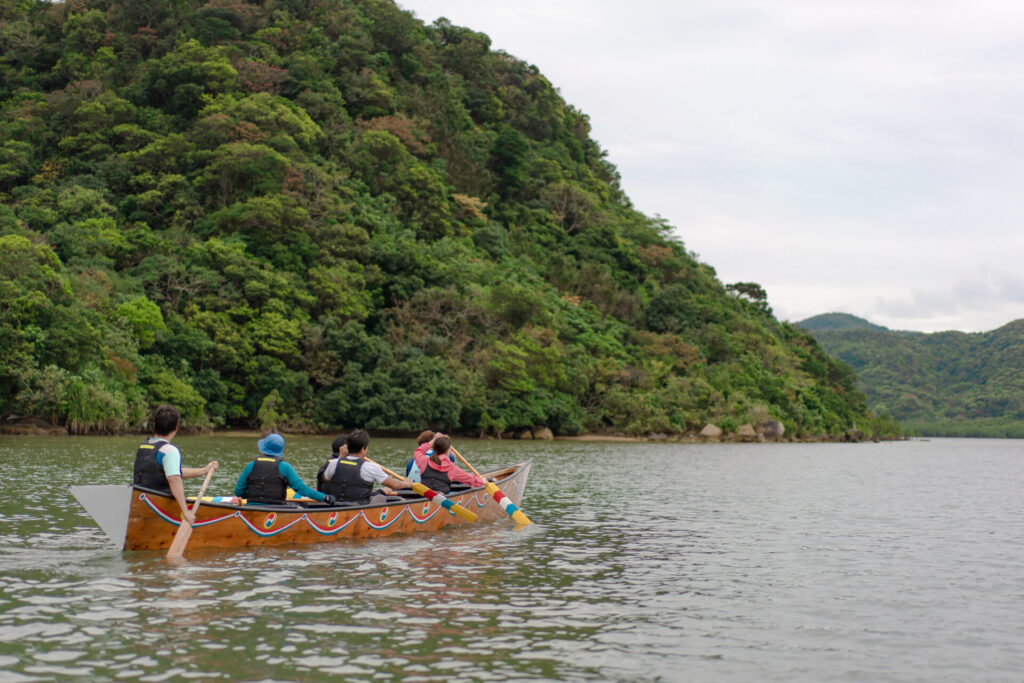
A boat adorned with vibrant patterns slowly rows out on the Nakara River on the west side of Iriomote Island. This boat, known as a “Sabani,” was once used by Okinawan fishermen for fishing. The rowers, consisting of tourists, hold oars called “Yako,” synchronizing their breaths to propel the Sabani upstream. Along the riverbanks, Japan’s largest mangrove forest and the majestic jungle it leads into are visible. Leading the way is Shimoji Shuhei, a native of the island. As a member of “Shirahama Koina,” he works to introduce visitors to Iriomote Island’s rich natural environment, traditional culture, and local life.
“The sight of the Sabani setting off often catches the attention of local children. They wave at us with happy expressions.”
Iriomote Island, located in the Yaeyama Islands of Okinawa Prefecture, is largely covered by subtropical primeval forests. Its abundant natural environment is home to national treasures like the Iriomote wildcat and the crested eagle. In 2021, its biodiversity was recognized, and along with Amami Oshima, Tokunoshima, and the northern part of Okinawa Island, it was registered as a World Natural Heritage site. Shirahama Koina operates in the southwestern part of the island, in the Shirahama settlement. This small settlement has a population of about 120 people.
“The history of the Shirahama settlement is surprisingly short, about 100 years. The Iriomote coal mine was established in 1917, attracting many people from Okinawa Main Island, Ishigaki Island, and Taiwan. That’s when this settlement was created. After the coal mines were closed in the postwar period, logging for pulpwood for the paper industry became prevalent, marking a period when Iriomote Island was an industrial hub.”
Although the settlement was bustling with migrants from various places at that time, as the years passed, industries shrank, and the livelihoods of residents shifted to fishing, agriculture, and tourism. The scarcity of jobs turned the eyes of the youth outward. Only an elementary school exists in the Shirahama settlement. It’s common for students to leave for high school on Ishigaki Island upon graduating from middle school on the island. Further education or employment often leads them to Okinawa Main Island or the main island of Japan, Honshu, with few returning to Iriomote Island. Shimoji himself followed this path.
“After graduating from high school on Ishigaki Island, I found employment on the mainland. Like me, children raised on the island often dream of living on the mainland at least once, possibly due to a desire for what they don’t have.”
The hometown returned to after several years was like one big family
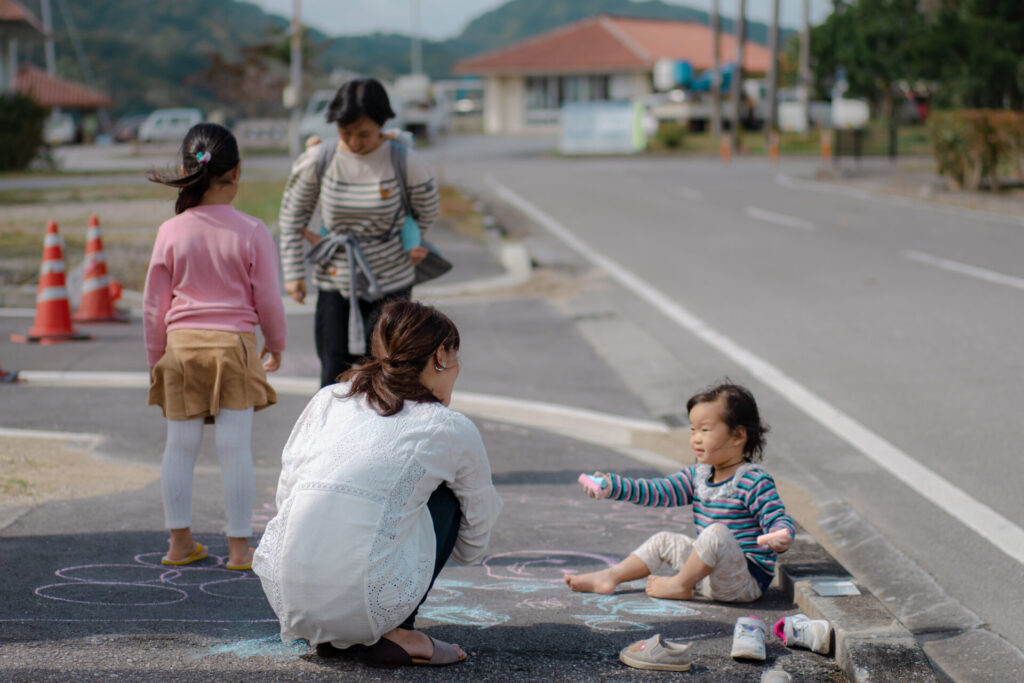
However, working on the mainland proved to be tougher than expected. Despite making many friends, the gap with his upbringing gradually made him feel out of place.
“I thought I would lose my physical and mental health if I continued like this. Having grown up on the island, I increasingly wanted to live by the beloved sea, which led me to decide to return.”
The people living in the settlement warmly welcomed Shimoji back after several years since his high school departure. “It felt less like returning to the settlement and more like coming home.” He was greeted by familiar faces, and the entire community felt like one big family, strengthening his sense of connection with each individual.
On the other hand, the community wouldn’t let their “young blood” go unnoticed. Calls for his participation came one after another, from the local youth group to the community center’s operations, and even after a decade, he’s still relied upon as a “youngster” at various gatherings.
“It’s surprisingly busy and quite tough, but interacting with the islanders also helps me see the real situation of the community and learn a lot. I feel like I’m being nurtured as a bearer of the community.”
Currently, Shimoji’s main occupation involves providing tours for snorkeling and fishing, as well as fishing itself, alongside activities with “Shirahama Koina.” Living on the island, he feels the yearly increase in tourists and migrants. However, compared to the city, job options are overwhelmingly limited, and like him, many young people leave for high school and end up working in far-off places, never returning to Shirahama settlement. Naturally, many residents are elderly, and it’s clear that the population will continue to decline if things stay the same. The more involved he became in community activities, the more urgent he felt about addressing the situation.
A connection between people, like family or friends, is something to be cherished
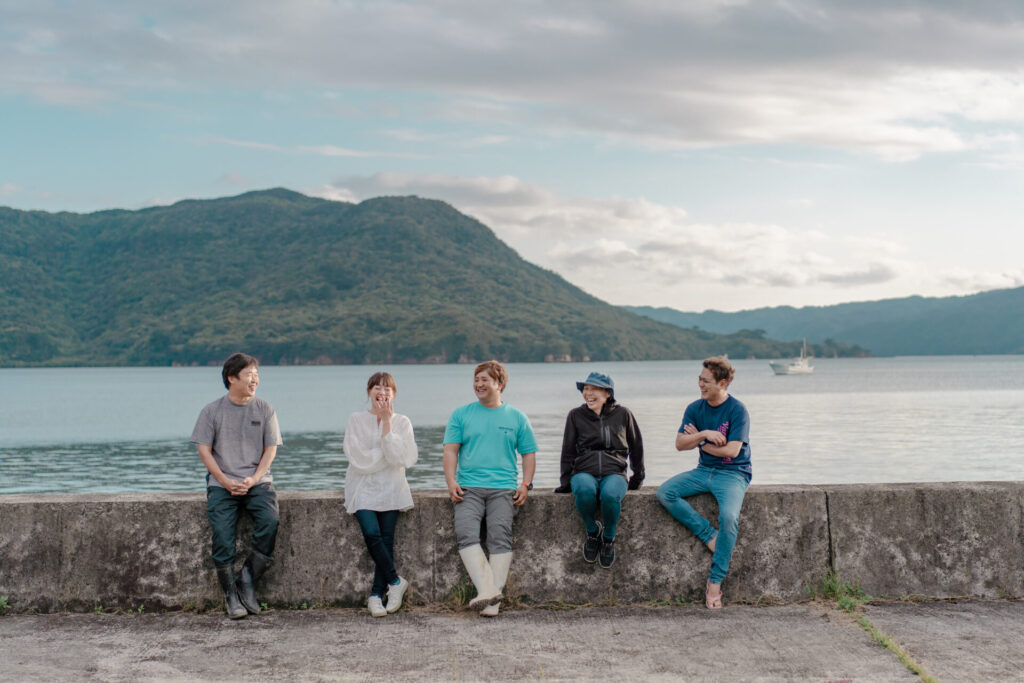
“That’s when the idea of starting ‘Shirahama Koina’ came up. The primary goal is to create an environment where children raised in Shirahama settlement can want to ‘live here’ when they grow up. To achieve this, we plan to organize tours that make the most of local resources, aiming for community revitalization and the creation of new jobs. We also aim to pass on the tradition of the ‘Sea God Festival’ using Sabani to the children.”
Since its establishment in 2021, the core activity of “Shirahama Koina” has been hosting experience tours that allow visitors to immerse in the rich natural environment, traditional culture, and local life of Shirahama settlement. Members, including those born in Shirahama like Shimoji and those who have moved here as part of the regional revitalization team, lead tours using their expertise. A key focus is building connections beyond the barrier between tourists and “Shirahama Koina” members.
“We try not to be too formal with tourists. It might be unfamiliar to those expecting a typical trip, but it helps bridge the distance. Through experiences unique to this place, touching on the history and culture of Shirahama settlement, we hope visitors feel like friends or family, making them want to return.”
The tours offered by “Shirahama Koina” are unique. They include Sabani experiences on the Nakara River, exploring the mangrove forests for wildlife with a nature guide, and trekking secret paths to shrines known only to locals. These activities, undertaken alongside members familiar with the region, involve conversing, laughing, and sometimes cooperating, providing a rich connection between people through extraordinary experiences.
“Among these, a plan to enjoy BBQ while Yuntaku (chatting) may be unique. Eating and drinking together naturally encourages conversation, creating a feeling as if we’re long-time acquaintances.”
More than tourism, it’s about the experience. More than a trip, it’s a stay. Deep connections with the Shirahama settlement and “Shirahama Koina” members may lead people to consider this place a second hometown.
“The elderly locals are still watching us from a distance, thinking, ‘The young ones are up to something.’ We want to continue our efforts, looking toward the future of the Shirahama settlement, hoping to earn their recognition. Eventually, we aim to expand our activities to involve the entire settlement, connecting residents and tourists. We hope to create a warm circle where everyone feels part of the large family of Shirahama settlement.”
What “Shirahama Koina” aims for is to prepare an environment where children born and raised in Shirahama settlement can envision their future on this land. Adults proud of their hometown are slowly but surely laying the foundation for this.
What do we want to pass on to the future?

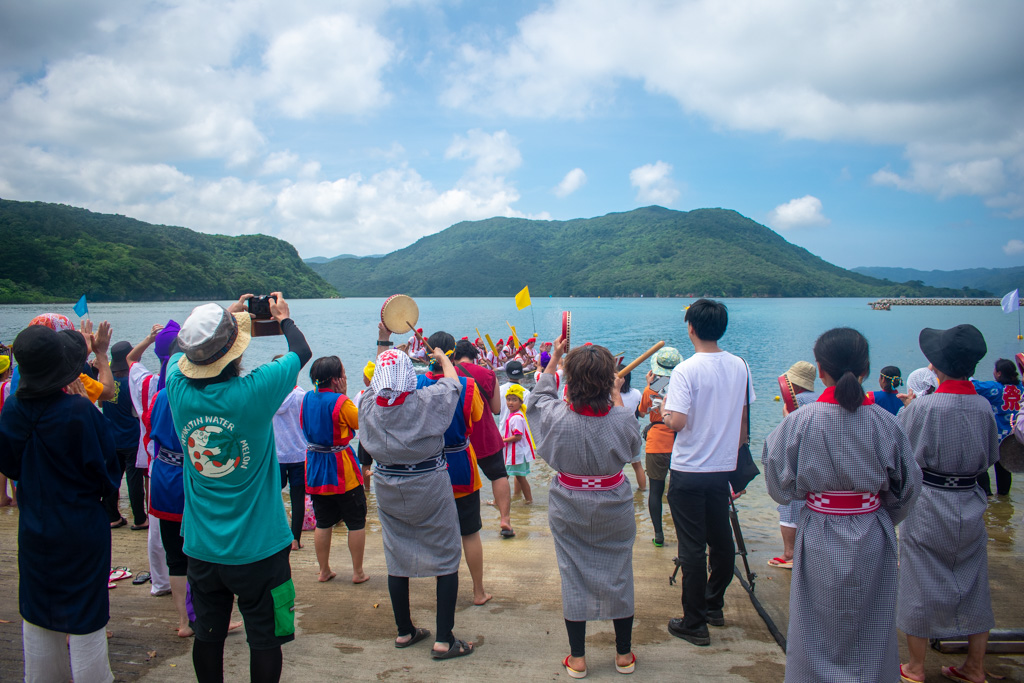
Finally, we asked Shimoji what he would like to connect to the future.
“The ‘Sea God Festival’ started by the migrants who founded Shirahama settlement. Although the settlement has only about 100 years of history, I want to pass this tradition on to the children. Through the festival, I also want to nurture a love for my hometown.”
One of the objectives of “Shirahama Koina” is the succession of the “Sea God Festival.” This festival, praying for the safety of sailors and abundant catches, and the health of residents, features a Sabani race after offering sake to the gods of Nirai Kanai, creating a lively atmosphere. The festival, established by the unity of migrants, further strengthens the bonds within Shirahama settlement.
“I hope the children, witnessing the ‘Sea God Festival’ and ‘Shirahama Koina’s’ activities, will feel a sense of hometown pride. But like me, it’s necessary to leave the island once. Experiencing different environments helps one appreciate the beauty of their birthplace anew. If more young people return, the potential for Shirahama settlement will expand.
First of all, the attitude of adults is probably the most important thing. We believe that our love for Shirahama settlement and Iriomote Island will surely be conveyed to the children.”
Like Shimoji, perhaps the true value of one’s hometown is realized upon leaving. And maybe, the richness of what was thought to be “nothing” at home can be taught by those visiting from outside. If so, “Shirahama Koina’s” activities are undoubtedly nurturing a respect and love for the children’s hometown. The sight of adults laughing and talking together in the settlement will likely become a fundamental landscape for the children.
